
© Paula Lobo. (Click image for larger version)
Paul Taylor Dance Company
Junction, all at once, Promethean Fire
★★★★✰
New York, Neidorff-Karpati Hall
23 June 2019
www.ptamd.org
www.oslmusic.org
Trajectory
For the past three weekends, the Paul Taylor Dance Company has been performing a trio of Bach programs, accompanied by the Orchestra of St. Luke’s, at Manhattan School of Music. June 23 is the final day of the festival – it also marks Michael Trusnovec’s final appearance with the company, after two decades. His is the first in a wave of retirements that will also include Laura Halzack, Sean Mahoney and Michelle Fleet. By the end of the year, the Paul Taylor Dance Company will have entered a new generation.
On the evening of June 22, I caught Program 1, which includes not only Taylor’s first work to Bach – Junction, from 1962 – but also his last, the imposing Promethean Fire, from 2002. And in the middle, a new work by the choreographer Pam Tanowitz, who, after years of working in relative obscurity has recently been hit with a deluge of commissions. In the past six months, she has made works for the Martha Graham Dance Company, New York City Ballet, and now the Paul Taylor Dance Company. And this is in addition to the London première of her critically-acclaimed Four Quartets at the Barbican, as well as other projects.

© Paul B. Goode. (Click image for larger version)
It was fascinating to see the contrast between Junction and Promethean Fire, two dances separated by exactly four decades. Junction, made when Taylor was still a dancer with Martha Graham, is the work of a radical; Promethean, that of a master craftsman. The latter, made in the wake of September 11th, is tragic, large in scale and scope, self-assured, and, to my eye, a tad bombastic. How could it not be, given the circumstances and the score, which includes the Toccata and Fugue in D Minor, music fit for the end of the world? It abounds in imagery of destruction and redemption: piles of bodies, lost souls writhing, pietas, and a final chorus of angels. The dancers, led by Michael Trusnovec and Eran Bugge, perform it with solemnity and conviction. What dazzles most here is Taylor’s craft: the constantly shifting patterns, the deft and fluid way he gets the dancers on and off the stage, the glorious images he builds with all those bodies. It is a work created by a master at the peak of his craft, and conscious of his powers.
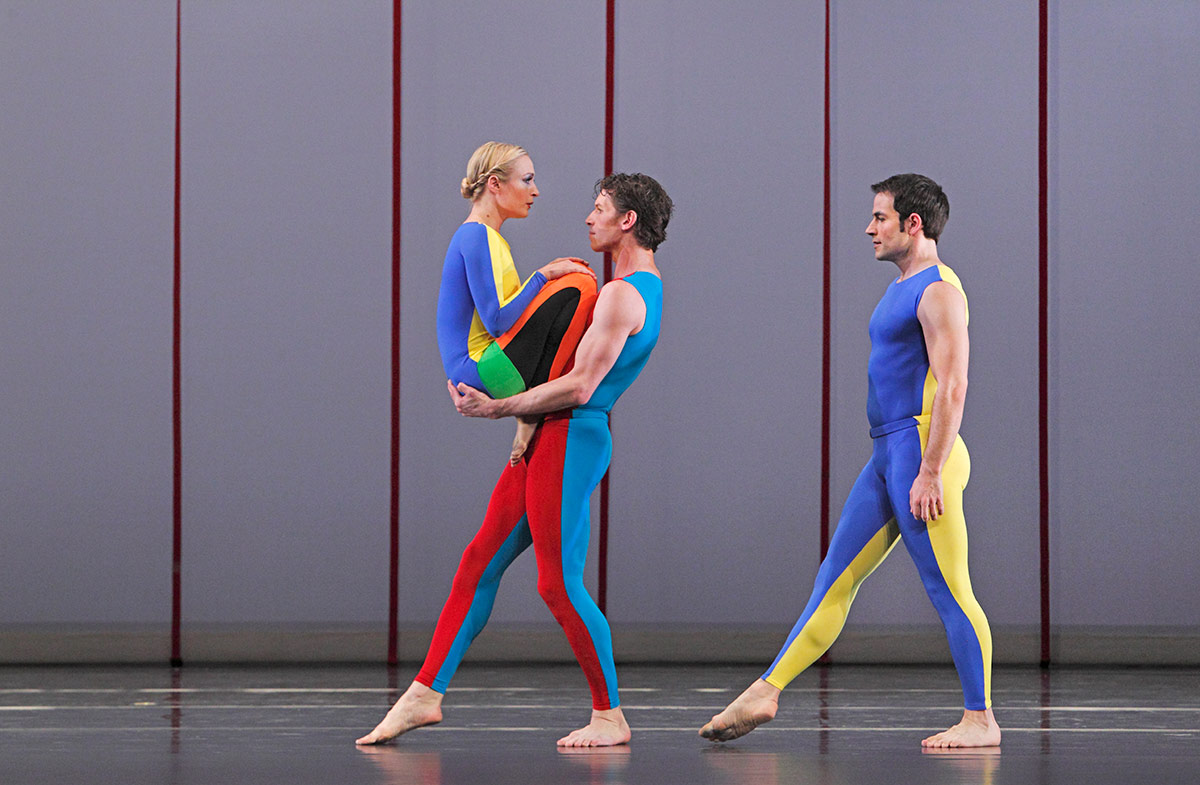
© Paul B. Goode. (Click image for larger version)
Junction, in contrast, is strange and jagged and surprising, and thoroughly (though intentionally) unmusical. Just as the bright, color-block costumes, by Alex Katz, fragment the dancers’ bodies into squares and stripes, the choreography defies fluidity and any idea of harmoniousness. The dancers behave like strange creatures in distress, birds or insects perhaps, awkwardly flapping their wings as they pitch their torsos forward, or suddenly round their backs in a kind of bizarre mating ritual. A small woman (Kristin Draucker) crouches on a large man’s back (Sean Mahoney), staring out, awaiting an unknown signal, at which she slowly she rises to full height, opening her arms in a V. Taylor ignores the music – excerpts from two cello suites, blurrily played – deriving from it only a kind of frenzied energy. The dancers make their own time; often they are at odds with each other, creating a kind of visual cacophony. One can sense here Taylor’s desire to throw off the order and predetermination of Martha Graham’s work; it’s like a finger in her eye. Once he got Junction out of his system, he could re-set and begin again. The next year he made Aureole.
In her all at once, Tanowitz seems to have taken Junction as her starting point. Like that work, it is a paean to awkwardness, and at least at the beginning, it ignores, or even competes with, the music. (Bach’s violin concerto in A minor and the oboe sonata in G.) Dancers intentionally make noise with their feet as they clomp and galumph onstage. Detailed rhythmic footwork abounds, and the piece closes with a kind of madcap hornpipe for Lee Duveneck, which ends only when he collapses on the ground.
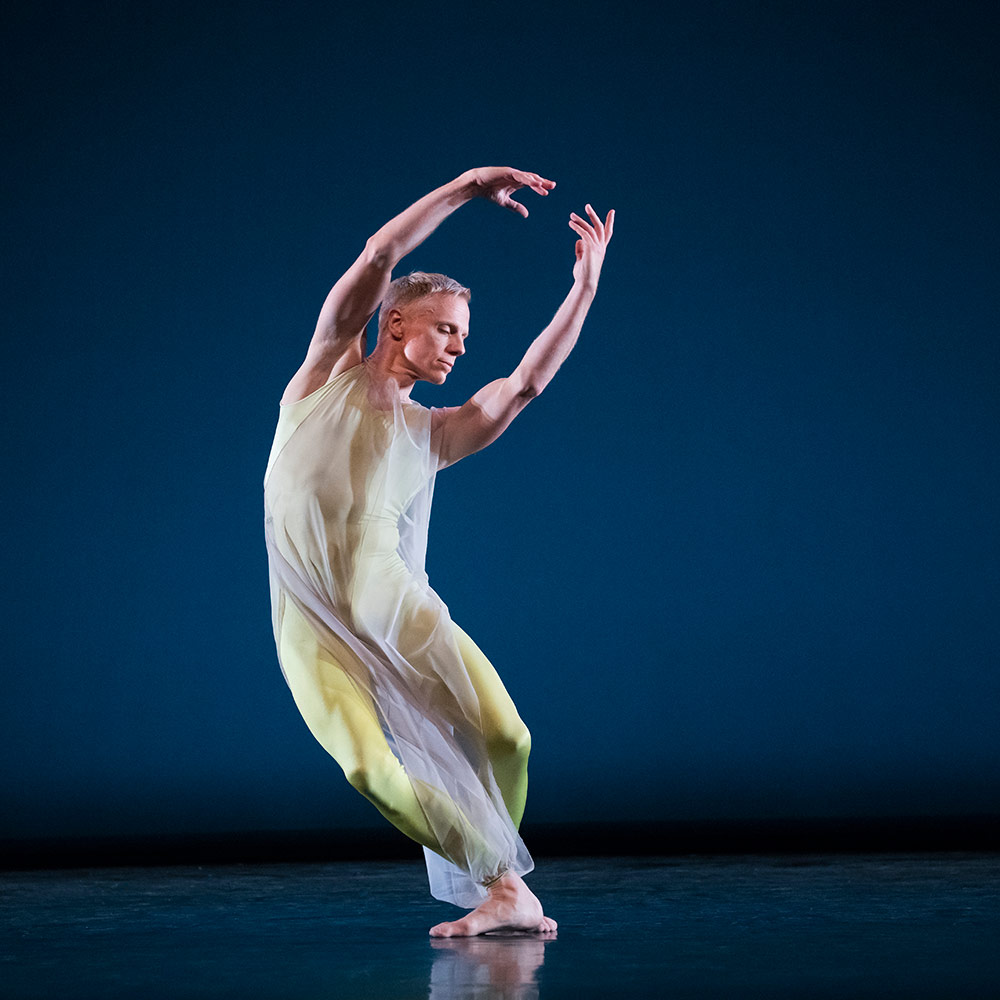
© Paula Lobo. (Click image for larger version)
As is often true of Tanowitz’s work, the footwork is an imaginative compilation of steps, mostly drawn from ballet (coupés and passes and small jumps and hops and beats). Meanwhile the upper body bends and twists in unexpected ways. The dancers look alert and a tad ironic; the underlying mood is one of humor and intelligence. This feeling is further emphasized by the attractively weird costumes by Harriet Jung and Reid Bartelme: unitards in pale colors encased in ballooning, translucent garments that create a halo-effect around the body. Most of the time, everyone does his or her own thing, but there are little moments of unison or echoing or interaction. The interactions – a hand on the neck or an interlocking of arms, is objective, non-emotive. A staccato feeling predominates; at times, the plainness of the upper body and arms recalls Irish dance.
I sometimes feel like all the Tanowitz dances I’ve seen are really one dance, an extended and spirited conversation with ballet and various other dance forms. But the evenness of tone, and the tendency to interrupt every idea with another idea wears thin. I, at least, begin to ask, what’s the point of all this ingenious activity?
Which makes me wonder whether, like Taylor, Tanowitz might eventually move on to a new chapter, exploring material beyond the re-articulation of dance steps. She certainly has the chops – the question is whether she has the inclination.












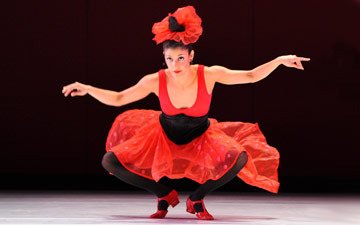

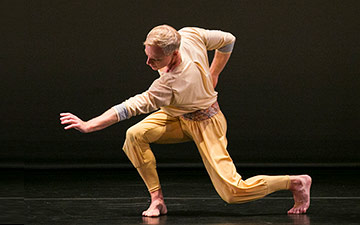
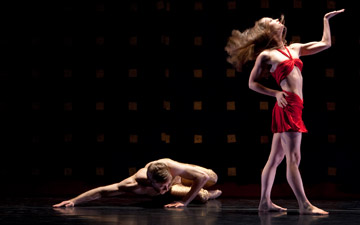
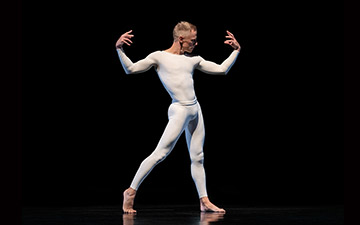
Once again, Marina captures the dance, the moment and a keen analogy between the generations of choreographers. How luck we are to enjoy her “eye.”